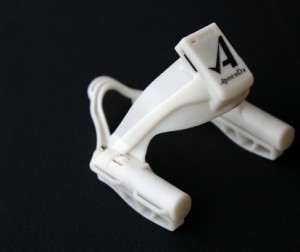 MaRS Innovation and the University Health Network‘s Toronto Rehabilitation Institute have collaborated to bring a new technology to market that accurately diagnoses sleep apnea at the patient’s home.
MaRS Innovation and the University Health Network‘s Toronto Rehabilitation Institute have collaborated to bring a new technology to market that accurately diagnoses sleep apnea at the patient’s home.
Sleep apnea is a medical disorder that is gaining increasing recognition as a major health issue. It is estimated that six to eight per cent of the world’s population suffer from the disease, but 85 per cent are undiagnosed.
Undiagnosed sleep apnea is estimated to cause $3.4 billion in additional medical costs in the US.
Why do so many people go undiagnosed?
- Access to sleep laboratories is expensive ($1,500 in the United States) and in limited supply.
- Home sleep apnea methods require expensive equipment, technician set-up, have wires the patient can get tangled in, and offer poor quality data. For these reasons, they have had modest market penetration.

The ApneaDx™ device is uniquely positioned to give the quality of sleep lab data, with minimal inconvenience (e.g., no wires, no bulky equipment and no setup) at home, and at a fraction of the price of a sleep lab or other home systems.
This well-developed device and algorithm captures breathing sounds with a microphone in a home environment and calculates an Apnea Hypopnea Index (AHI) that is essentially equivalent to an AHI derived from an overnight stay in a sleep laboratory.
The ApneaDx™ device, invented by Drs. Douglas Bradley, Geoff Fernie and Hisham Alshaer, is lightweight and flexible. Worn over the mouth and nose, it is comfortable and does not restrict breathing since it is a flexible open structure.
The self-contained ApneaDx™ device has no external wires or associated hardware; it can be disposable. It records breathing sounds during sleep using a miniature data acquisition module that supports a single microphone. Data is stored on a removable memory device. The instrument’s simple portable design makes it appealing to end-users and surpasses other portable devices in terms of accuracy, comfort and convenience
ApneaDx Inc. will commercialize the technology. MaRS Innovation has invested in the technology’s early-stage development, provided seed funding for the company and sourced an initial CEO in Dr. Andrew Sinclair.
The Youtube video above was released by Toronto Rehabilitation Institute as part of their R&D annual report.

